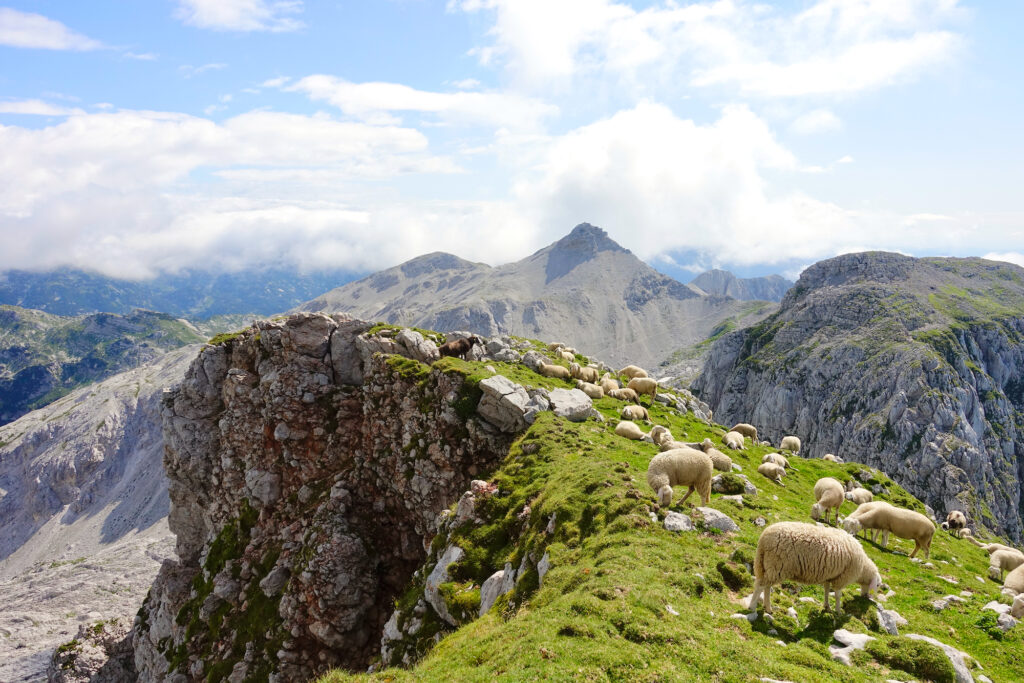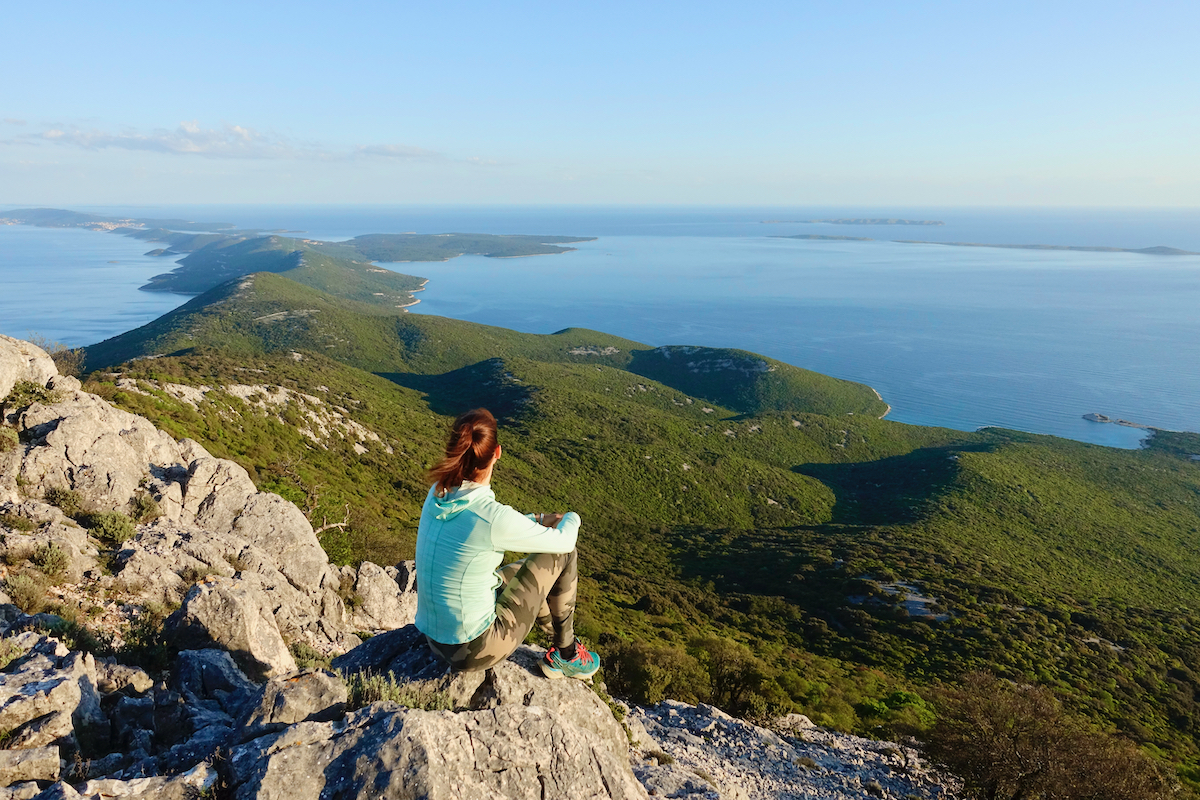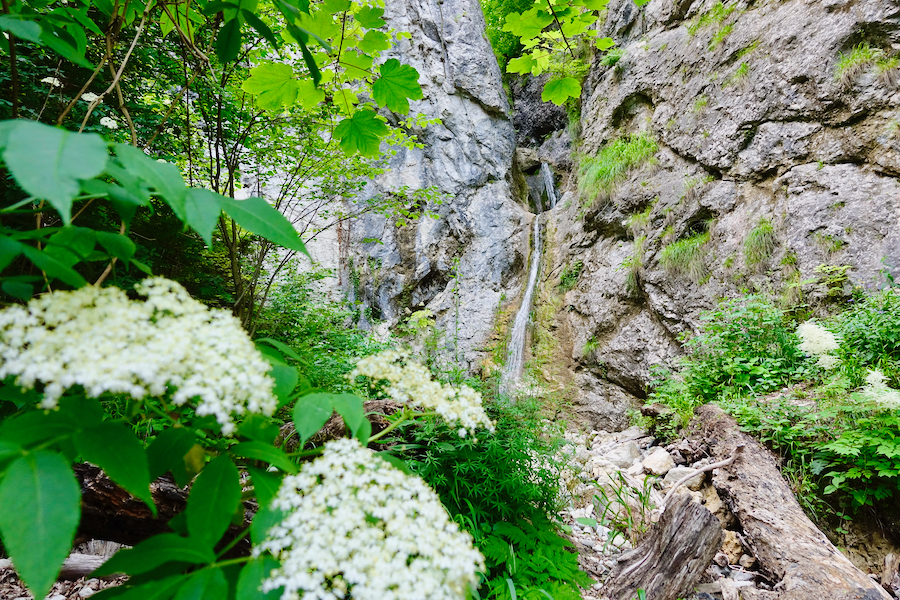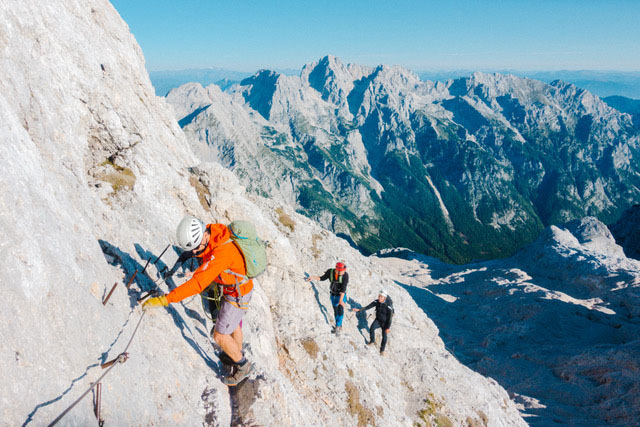Being the owner of a hiking agency, an UIAA guide and a big mountain enthusiast, I get this question a lot: what hiking gear do I need for the Slovenian mountains. However, the answer is not so straightforward and you’ll have to understand Slovenia’s local conditions first. Anyway, I’ll try to lead you through all the factors that influence the decision on what to pack for the mountains and present you with a list of gear to pack when going hiking in Slovenia.
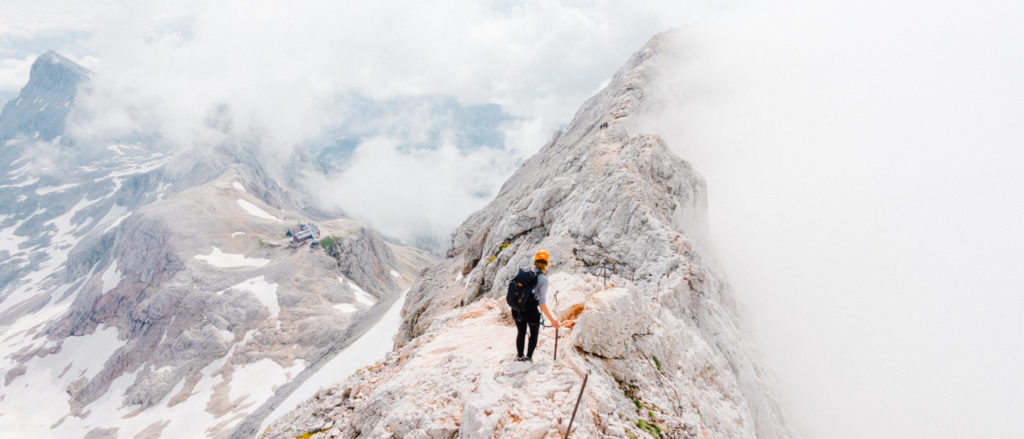
Exploring Slovenia’s best hikes:
Stunning Julian Alps
Golica and endless fields of daffodils
Triglav Lakes Trek
Triglav, Scenic Route
First off, let’s talk about some basic factors that will help you understand better the country’s specifics and the appropriate gear you’ll need for the Slovenian mountains.
The seasonal factor
No matter where in Slovenia you are planning to go hiking, you’ll have to take into consideration the season you’ll be visiting in. In regard to the gear we pack, we differentiate two main seasons: summer and winter, depending on the presence of snow. The winter season usually starts in October / November and ends in April / May, but in high mountains above 2K meters you’ll probably find snow until early-to-late July in shady areas, particularly after winters with lots of snow. For example, after this year’s long winter, when we saw more than five meters of snow at the Kredarica Hut below Mt. Triglav in late May, one can expect the snow to stick around well into July and so should the winter gear in our packs. A rule of thumb is to carry an ice axe and crampons until the last patch of snow on an exposed trail disappears.
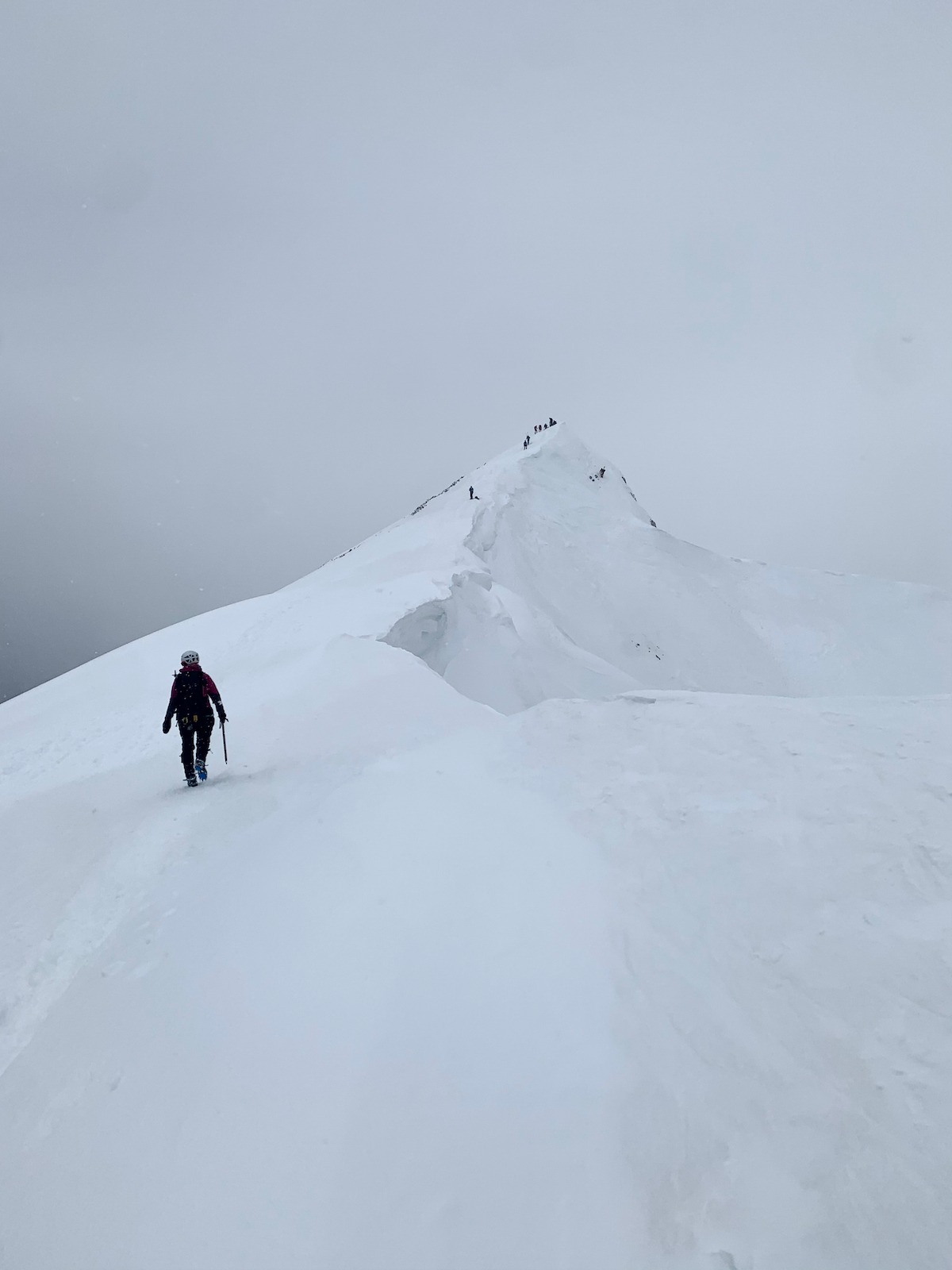
The altitude
It goes without saying that the higher you go the colder you can expect it to be. Due to the decreasing air pressure at a higher altitude, the temperature usually drops by 0.6 degrees C every 100 meters of altitude gain. A quick calculation of the altitude difference between Ljubljana at 300 meters and Triglav at 2,864 meters shows that you can expect approximately 15 degrees C less at the top of the highest mountain of Slovenia than in its capital. Plus the wind factor. Therefore, if it’s 15 degrees in Ljubljana and it’s raining, it’s probably around zero on Triglav and snowing. With that in mind one should always keep warmer clothing and the right gear in their backpack.
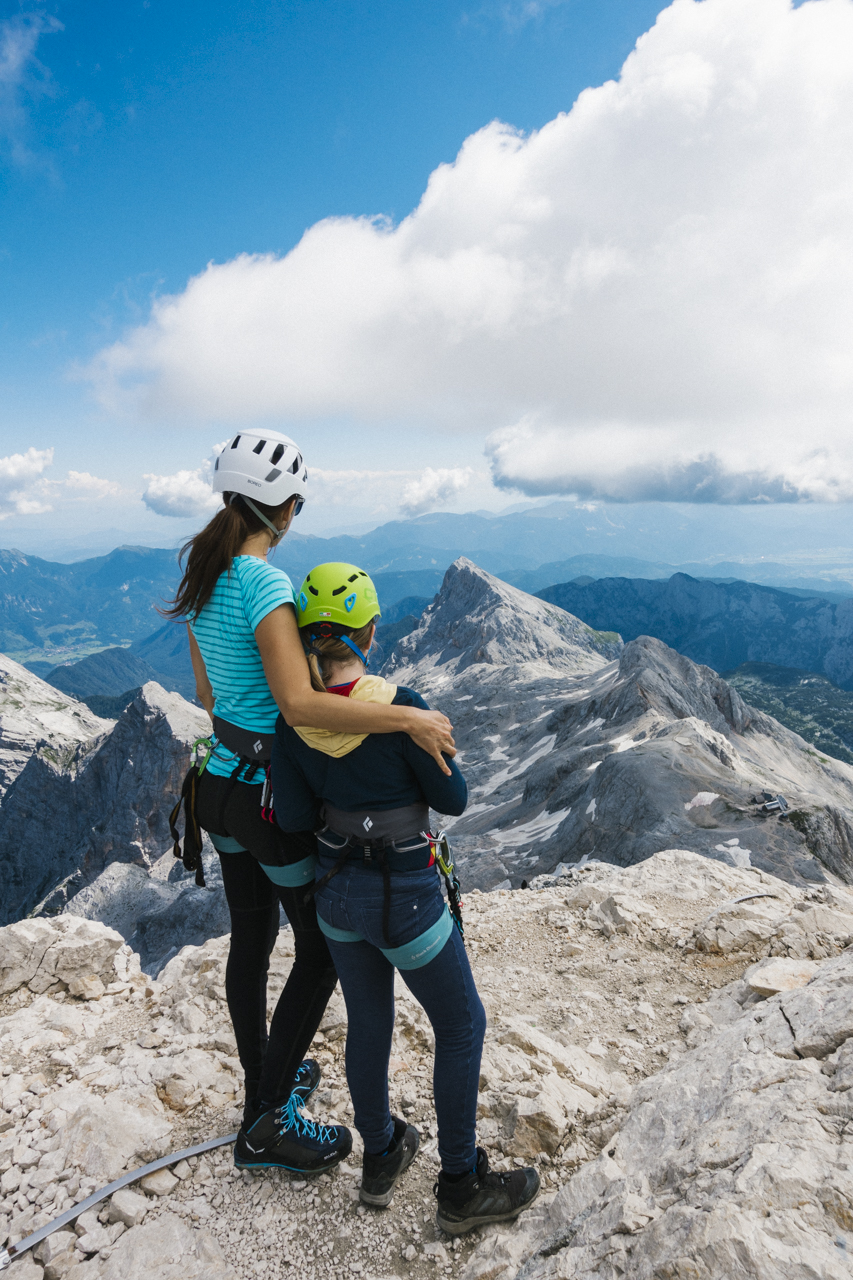
The mountain position
Some mountains get more precipitation than others. An excellent example is Mt. Snežnik. Only about 30 km from the sea, where they rarely see the snow, Snežnik receives relatively more precipitation and, thanks to its altitude of 1,796 m, more snow in winter months in comparison to the mountains at the same altitude in other parts of Slovenia. The same applies to the compact snow which in some areas stays much longer than in others. On some mountains the snow and ice are even permanent, like below Triglav, Jalovec, and the northern slopes of Skuta, Prisojnik, and some parts of the Martuljek Mountain Group. Therefore, do some research before heading out and try to find out the specifics of the mountains you’re planning to climb.
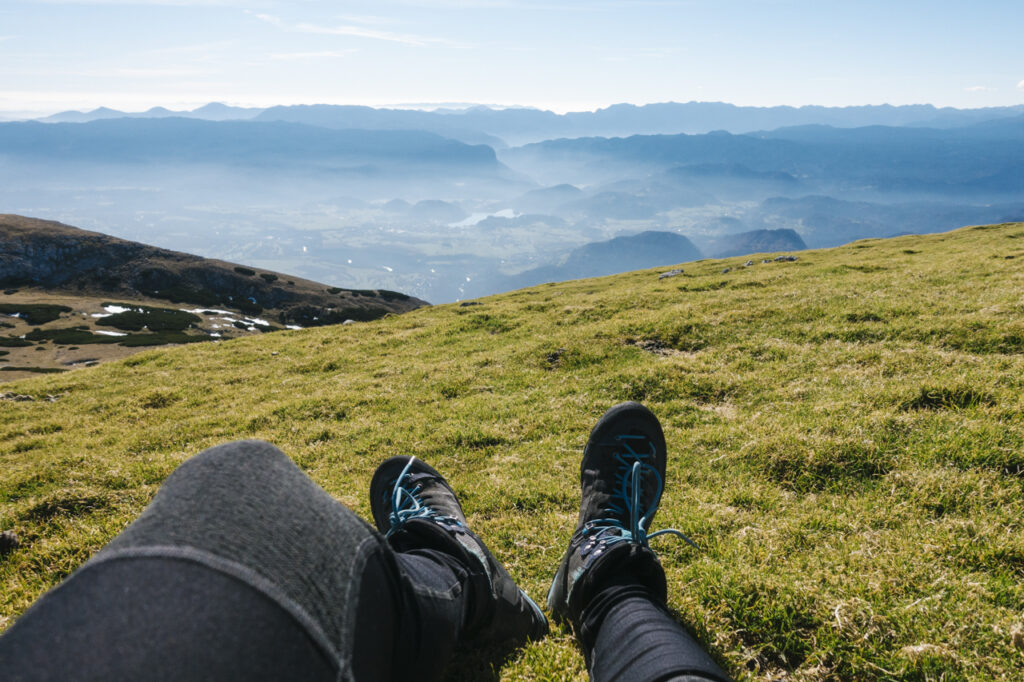
Exploring Slovenia’s best treks:
The Karavanke Alps Traverse
Triglav Lakes Trek
From Bohinj to Soča Valley Trek
Soča Valley and the Alps
The weather in Slovenia
While Slovenia in general is a green country (hey, it’s been voted the world’s first green destination in 2016!), its Alps are particularly wet. The Julian Alps receive more than 3,200 mm of precipitation per year which qualifies them as some of the wettest Alps in Europe! To put the number into perspective, Hawaii as the wettest state of the US receives an average of 1,618 mm of rain per year, while California gets only 563 mm.
The most precipitation in the Slovenian Alps occurs in the spring and autumn months, however, the hot summer days usually bring daily afternoon showers or thunderstorms. A rule of thumb in summer is to be off the mountain or in a mountain hut by noon. All in all, it’s always better to pack extra clothing (tucked in a plastic bag in the backpack) and invest in a good waterproof jacket, rain pants, waterproof boots, and a rain cover for the backpack. Trust me, it will pay off especially on multi-day treks.
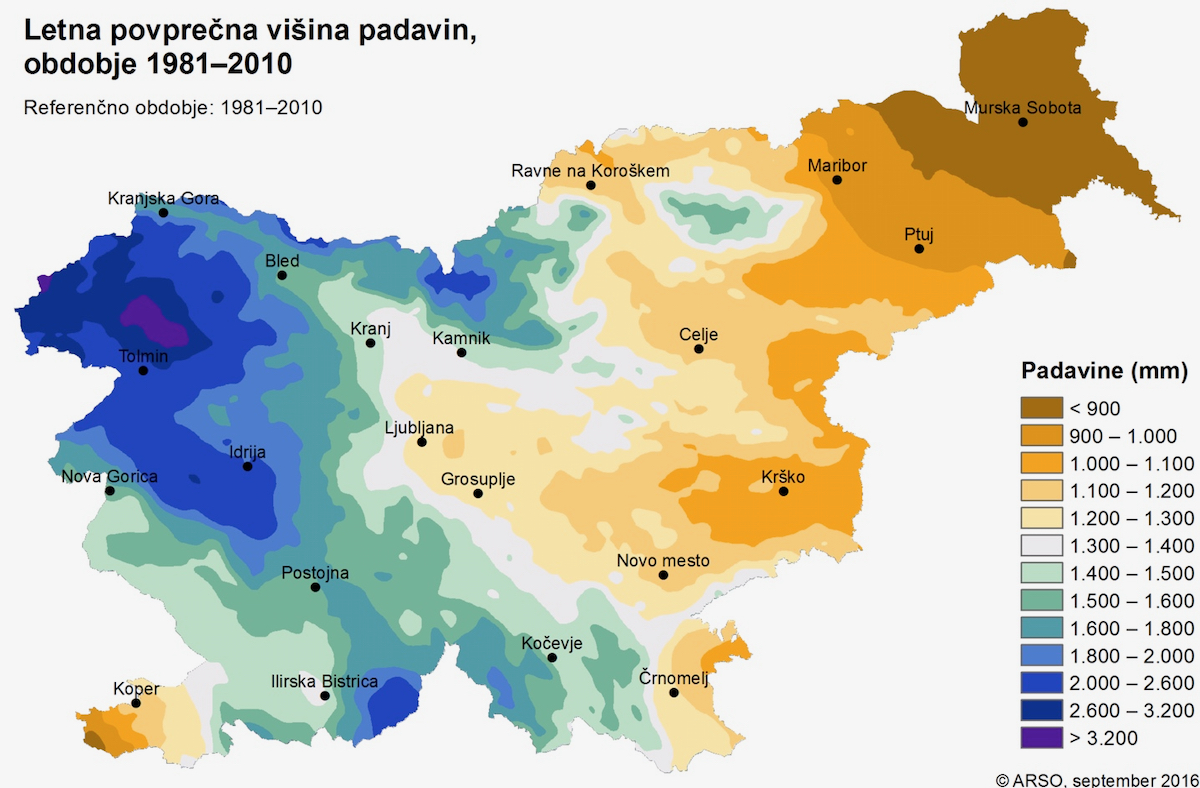
The goal in the mountains
Whether you are planning to tackle a via ferrata, an Alpine climbing route, or an easier hiking trail, you’ll need some sort of specific gear. That’s why you should make sure you know the route well, read about its specifics, make sure it’s not closed (check PZS for any warnings), plan the gear you’ll need for safe ascent and descent, and practise using it at home before actually going out there.
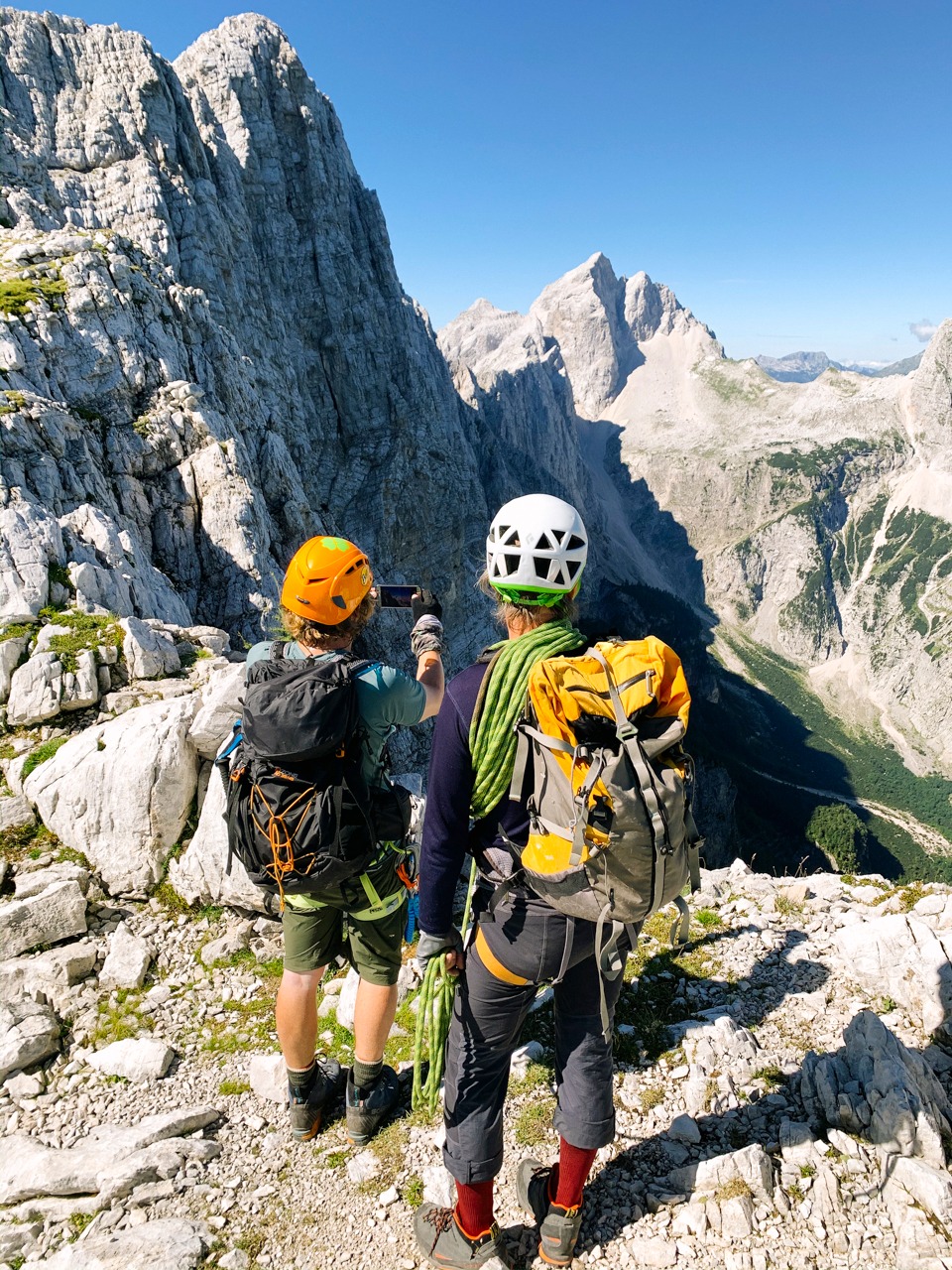
Exploring Slovenia’s best climbing tours:
Triglav, Scenic Route
Bovški Gamsovec
Mala Mojstrovka via Ferrata
Mangart via Ferrata
Mountain gear essentials
Based on the above, here is a mountaineering checklist that will help you not only survive in the mountains but truly enjoy them. To determine what gear you need to bring on your hike / climb, think about the type of hike / climb and its length, the length of the technical sections and their degree of difficulty, the season and weather forecast, the altitude you’re going to, the mountain specifics, and, obviously, your goal.
Hardware essentials for hiking and via ferrata climbing
- Climbing backpack
- Helmet
- Climbing harness
- Lanyards
- Nylon slings
- Locking carabiners
- Climbing gloves
- Ice axe(s)
- Crampons
- Avalanche safety equipment: an avalanche transceiver, a probe and a shovel
- Headlamp with extra batteries
Alpine climbing extras
- Rope
- Non-locking carabiners
- Belay/rappel device
- Prusik cords
- Ice tools
- Ice screws
- Friends, nuts and pitons
- Quickdraws
Navigation essentials
- Map
- Compass
- Route description or guidebook
- GPS
- Phone with GPS apps
- Power bank or solar panel for charging your phone or GPS
- Altimeter
Food & drinks
- Water bottles or a reservoir (3 liters per day)
- Meals (if combined with meals in huts, make sure the huts are open)
- Trail snacks
- Energy food & drinks
Clothing & footwear
- Moisture-wicking base layers (T-shirts, long underwear for cold days)
- Quick-drying pants
- Long-sleeved shirt
- Light fleece
- Jacket suited to the season
- Hiking boots or approach shoes suited to terrain
- Socks
- Hat for either cold or sun
- Headband
- Gloves
- Neck warmer
- Rainwear (jacket and pants)
- Gaiters for snow
- Extra clothes
Emergency & first aid
- First-aid kit
- Lighter / matches
- Emergency shelter
Health & hygiene
- Menstrual products with extra plastic bags for keeping
- Sunscreen
- SPF lip balm
- Wet wipes
- Tissue paper
- Insect repellent
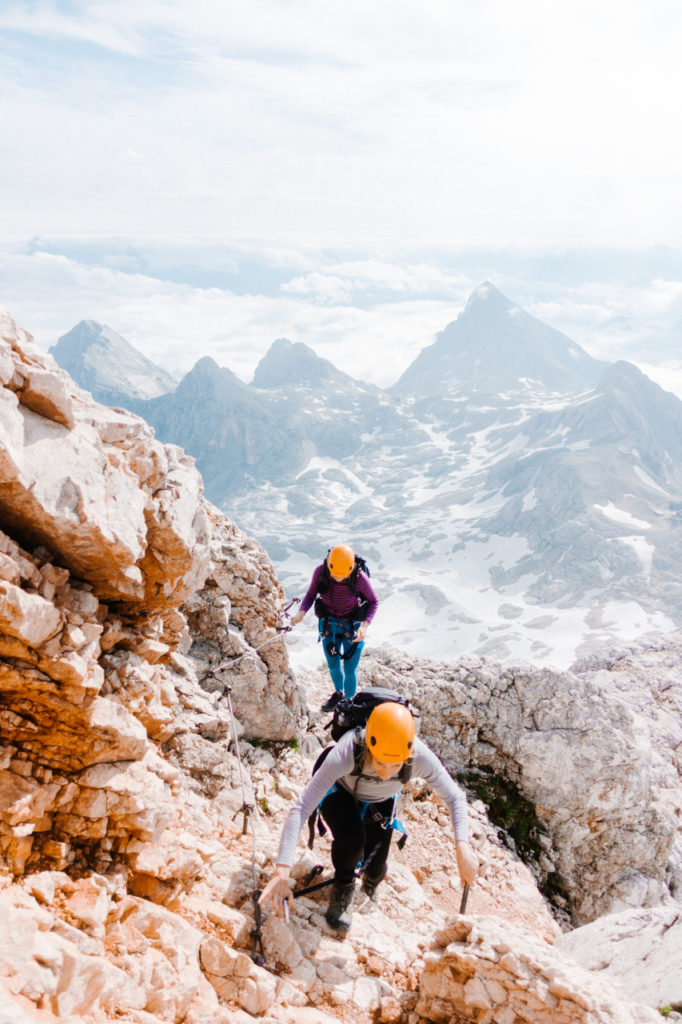
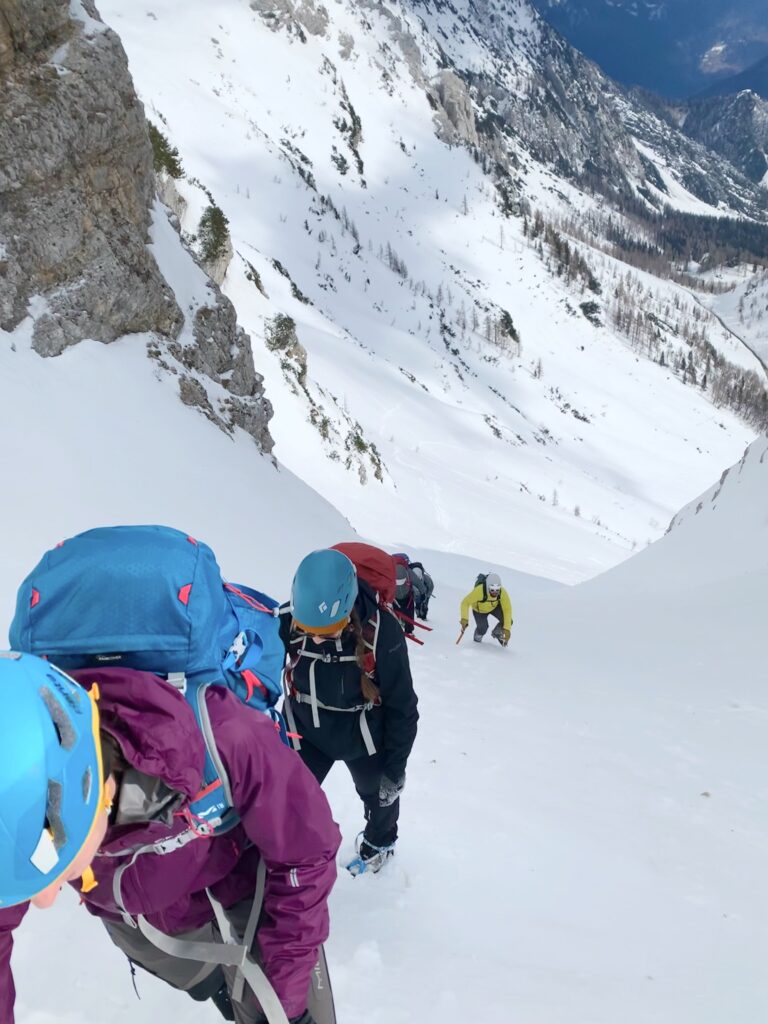
Selecting and purchasing equipment
I asked Anže, the owner of the Amfibija sports equipment store, who also happened to be my classmate on the training course for mountain guiding and is also a great hiking enthusiast, about purchasing the most important pieces of equipment – shoes, socks, a rain jacket and backpack. Let’s see what advice he gave us on how to select the right hiking gear.
Hiking shoes / boots
The most important piece of hiking equipment are definitely the shoes and their inseparable partner – the socks. The shoes and the socks are always a pair and a certain type of shoes fits better one type of socks than with another. As the assortment of shoes and socks is infinite, you should answer these questions before making the purchase:
– Length? The length of the shoes should always allow to have enough space in the front so that the fingers have enough “wiggle” room and will thus not hit the front of the shoe when walking downhill.
– How wide is my foot? The width of the shoes has to fit the width of your foot. The shoes that are too narrow will be squeezing your feet, while the shoes that are too wide will soon blister them as the feet will be moving inside the shoes.
– How heavy will my backpack be? A rule of thumb is; the heavier the backpack the stronger and more compact the shoes.
– Material? If you expect wet conditions, a waterproof membrane is a must.
– Color? Get out of here! Color is not important when buying the right shoes. You can match up the shirts with the shoes anyway. 😊
Socks
While synthetic socks are okay, Anže and his store swear by the merino wool socks. Regardless of the type of material, hiking socks should always be padded. The heavier the shoes the more padded the socks. The padding on the socks prevents blisters, improves moisture wicking, and helps the shoes to fit better.
Rain jacket
A rain jacket will protect you from the harsh weather conditions like the wind and rain. When purchasing a rain jacket, you must always check that the seams are taped. Also, water-repellent isn’t the same as waterproof! The size of the jacket should be spacious enough to accommodate a warm second layer underneath.
Backpack
The volume of the backpack depends on the length of the trek and the amount of equipment needed to be carried. When buying a backpack, you should always try a full and weighted pack; only then can you actually see if it really fits you. Also make sure to ask the salesman to fit the back of the pack to your size.
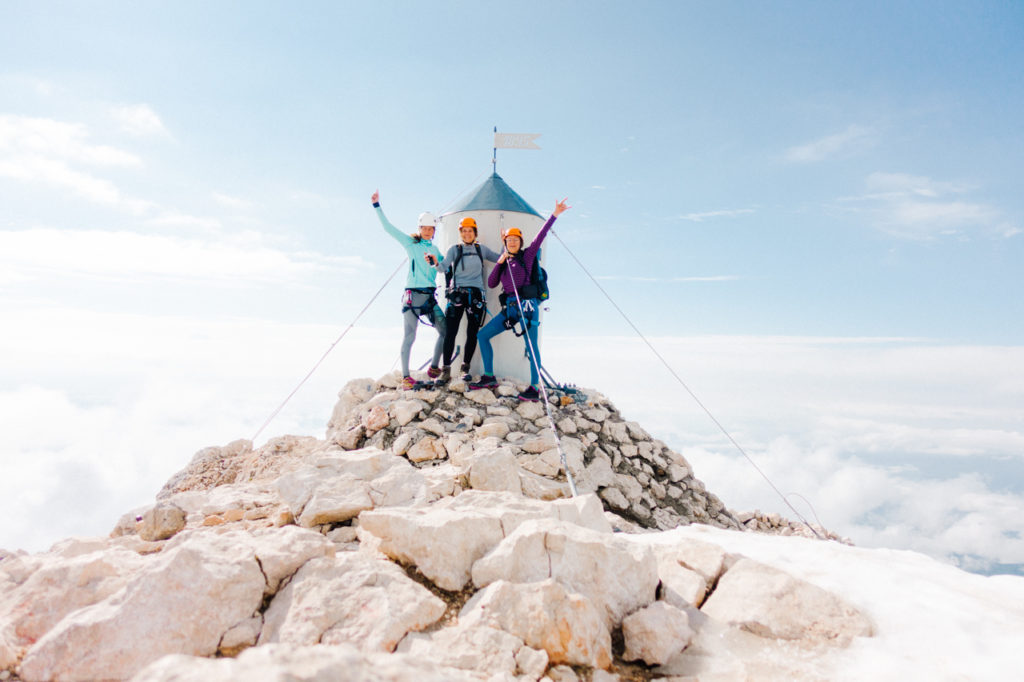
Fully equipped or not, I suggest you start with easier hikes and slowly upgrade the difficulty of the route with your growing experience. Even if you’re a pro hiker in your own country, take a day or two to get to know Slovenia’s mountains and get the feel for your favored type of routes here and the gear they require. After all, a correctly equipped hiker is a happy hiker!
Most importantly, don’t forget to enjoy your time outdoors! Cheers!
Read also on Blog:
Hiking in a flower paradise: Golica and its daffodils
The most scenic tour to Triglav
Best mountain hikes in Slovenia in summer 2023
Safe winter trails that will blow your mind
—–
Stay tuned for more outdoor adventures! Join eighty thousand Exploring Slovenia fans by liking us on Facebook, Twitter, and Instagram. If you enjoyed this story, sign up for the monthly exploringslovenia.com/blog newsletter. A handful selection of stories from Hiking and Climbing in Slovenia, delivered to your inbox every month.
Looking for a gorgeous tour in the mountains? Exploring Slovenia offers guided hiking and climbing tours!
